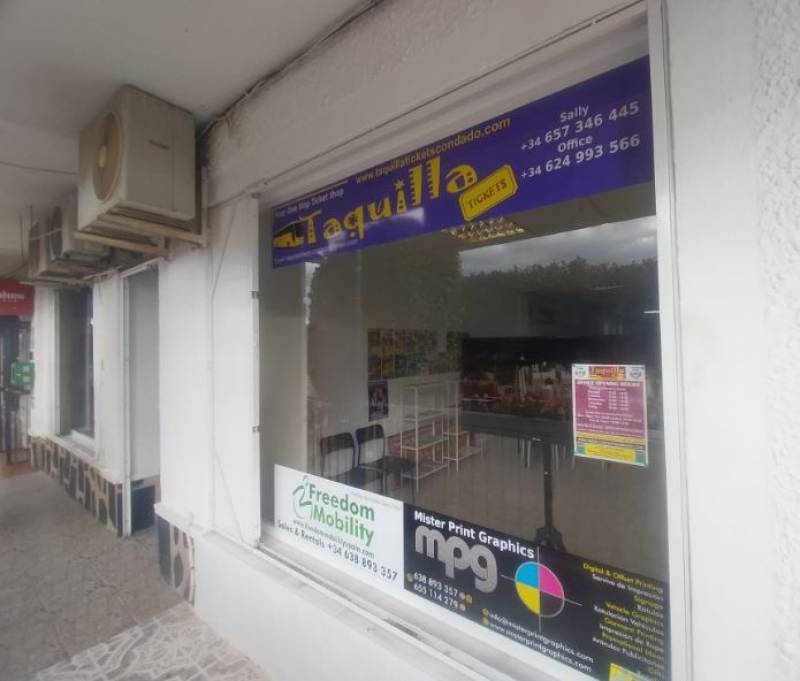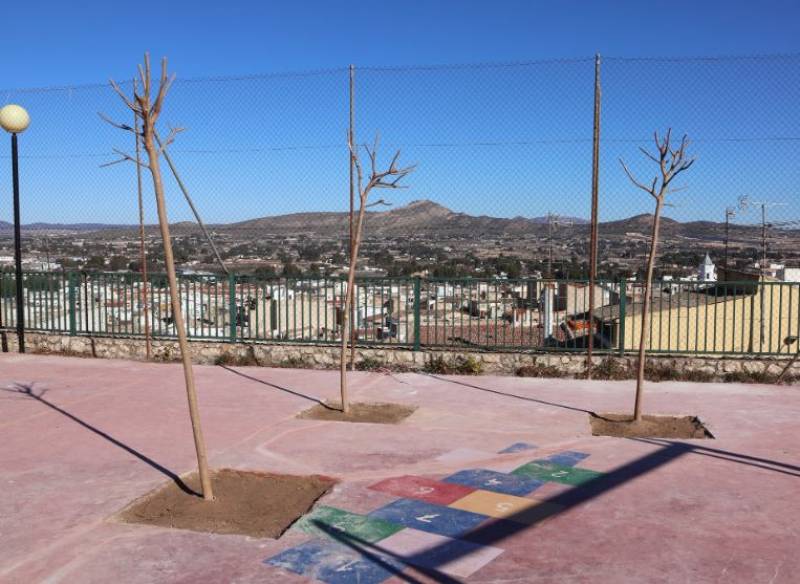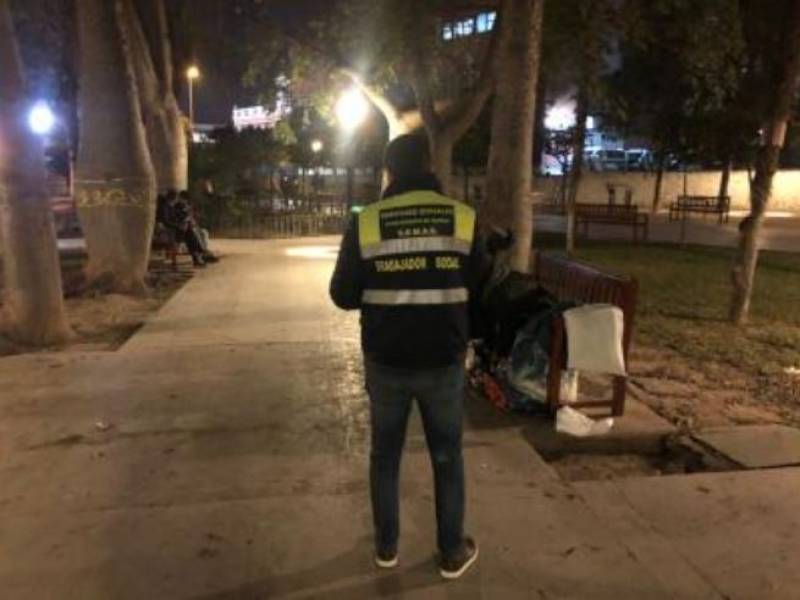
To be listed on the haciendadelalamo TODAY MAP please call +34 968 018 268.
First part of ancient Phoenician shipwreck is brought to the surface in Mazarron bay
On a historic day for the Region and underwater archaeology, the first fragment of the Phoenician ship is extracted from the shallows of the Bay of Mazarrón
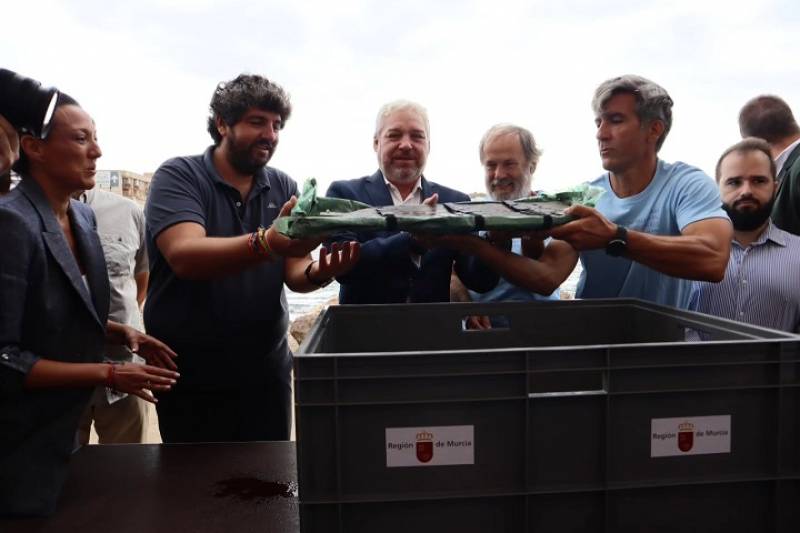 The first small section of the 2,600-year-old vessel of Phoenician origin was extracted from the sea in a complex operation that will last until the first week of November. The operation is expected to take a total of 44 days. The vessel sank off the coast of the Murcian municipality of Mazarrón at a depth of about two metres.
The first small section of the 2,600-year-old vessel of Phoenician origin was extracted from the sea in a complex operation that will last until the first week of November. The operation is expected to take a total of 44 days. The vessel sank off the coast of the Murcian municipality of Mazarrón at a depth of about two metres.
On Friday September 13, a team of 15 professional divers removed the first of the 20 sections into which the wreck has been divided in order to carry out the extraction, taking advantage of the fissures and fractures that already existed in the wood, which dates back to between 610 and 580 BC.
Carlos de Juan, the archaeologist responsible for the project explained that the extracted piece measuring around 72 centimetres long by 26 wide is the smallest of those that make up the ship and therefore the easiest to extract.
The segment was located in the starboard bow and has been extracted on a carbon fibre "bed" manufactured in situ at the bottom of the sea by a team of specialised divers. This process was assessed to be the safest way to avoid deterioration of the archaeological wood while removing it from the sea. Each section will be supported on a carbon fibre platform allowing the section of boat to be kept in a horizontal position during the operation of raising it from the seabed.
The next steps
This process has been used as a pilot and will be used with the next series of fragments whose outer shape is unknown because they are partially buried by sand, so the platforms must be tailor made on the spot to accommodate each segment. For the pieces whose outer shape is known, the extraction will be done on prefabricated beds.
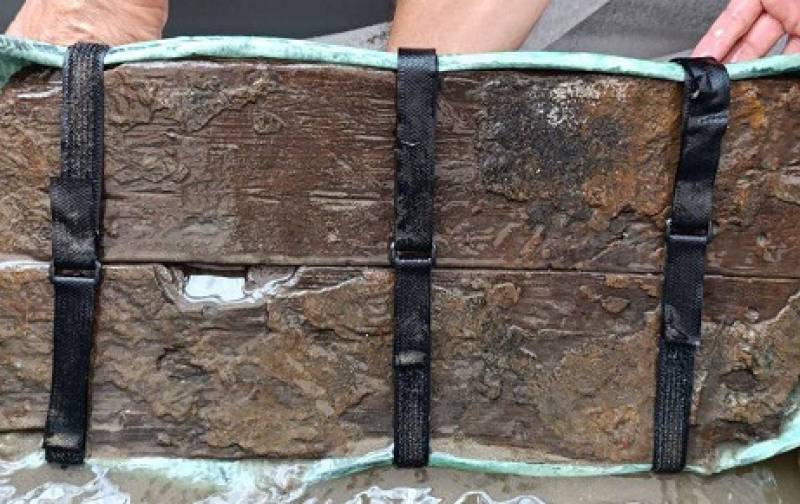 It is expected that the last segment to be taken out of the water will be the largest one which forms the keel, at about 3.3 metres long by 70 centimetres wide. De Juan indicated that the extraction of this section is expected to take about seven days, while other simpler pieces, such as the one just extracted, can be carried out in a matter of hours.
It is expected that the last segment to be taken out of the water will be the largest one which forms the keel, at about 3.3 metres long by 70 centimetres wide. De Juan indicated that the extraction of this section is expected to take about seven days, while other simpler pieces, such as the one just extracted, can be carried out in a matter of hours.
After this first portion, the archaeologists will proceed to extract the frames, transverse pieces of wood that form the skeleton of the ship, before proceeding with the rest of the portions.
It is essential, once removed from the water, that the pieces do not lose their horizontal position and are not allowed to dry out, so they will be transferred to the laboratory of the National Museum of Underwater Archaeology (ARQUA) in Cartagena, either submerged in vats, as in the case of the fragment extracted today, or wrapped in plastic film to preserve the humidity. Once at the laboratory the treatment and restoration work will take at least 4 years.
Public exhibition
The Phoenician ship currently being raised is called 'Mazarrón II' and was discovered in 1995, about 50 metres from the beach of La Isla, in the Puerto de Mazarrón, during research work on another sunken shipwreck from the same period, the 'Mazarrón I'.
'Mazarrón I' was extracted, only partially preserved from the sea and is on display at the National Museum of Underwater Archaeology (ARQUA), in Cartagena, while the 'Mazarrón II', which was discovered practically complete and with all its cargo on board, consisting of more than two tons of lead ore, an amphora, a hand mill and its anchor of lead and wood among other items. Once its cargo was extracted in the year 2000 and is also on display at the national museum, it was decided to protect the vessel at the bottom of the sea with a metal box.
The importance of the wreck cannot be over emphasised, being one of the most complete ancient ships discovered to date and is a unique example of Phoenician navigation and naval architecture. Through future study of both the ship and its contents, it offers the possibility of learning much more about the Phoenician presence and activity in the area.
The decision to extract the vessel has become imperative in recent years, as the metal box placed over the vessel to protect it has begun to sink into the sand faster than the boat, meaning the boat could end up being damaged or even crushed. So in 2021 the Regional Government and the Ministry of Culture agreed to extract the wreck to guarantee its protection, a decision that was corroborated in May 2022 by UNESCO during a conference of experts held in Cartagena.
 The Mayor of Mazarrón, Ginés Campillo, highlighted the historic milestone and the council’s insistence that the vessel is exhibited in the town when restoration is completed "It is imperative that the creation of a museum here, on the same site where this ship was extracted, be authorised and facilitated. Not only would we protect an invaluable heritage, but we would also enhance our cultural and tourist offer, transforming Mazarrón into a point of educational and historical research meeting of national and international reference."
The Mayor of Mazarrón, Ginés Campillo, highlighted the historic milestone and the council’s insistence that the vessel is exhibited in the town when restoration is completed "It is imperative that the creation of a museum here, on the same site where this ship was extracted, be authorised and facilitated. Not only would we protect an invaluable heritage, but we would also enhance our cultural and tourist offer, transforming Mazarrón into a point of educational and historical research meeting of national and international reference."
The president of the Region of Murcia, Fernando López Miras, along with Carmen Conesa, Regional Minister for Tourism, Culture, Youth and Sports, attended the extraction ceremony. The Regional President described the event as a historic milestone after years of debate, analysis and joint work, which will remain in the history of archaeology, in Spain and the world.
For more local news, events and other information go to the home page of Mazarrón Today











